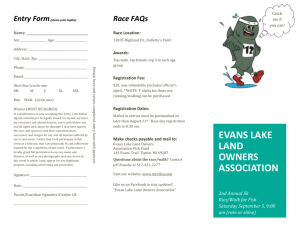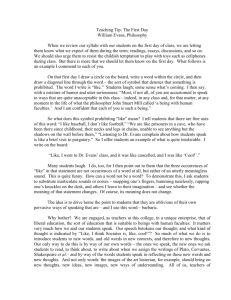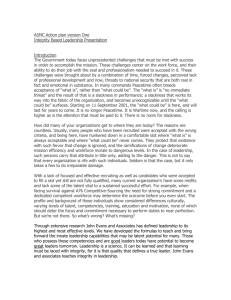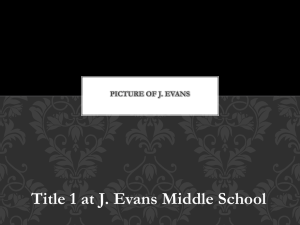EssayWalkerAdams.doc - Carteret Community College
advertisement
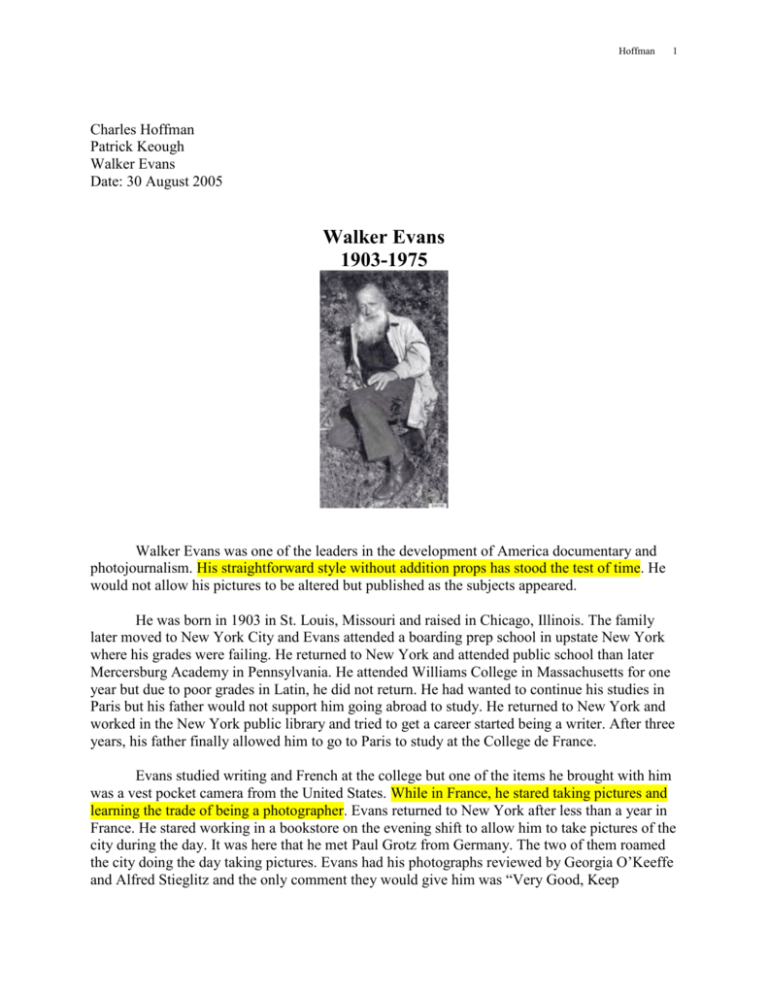
Hoffman 1 Charles Hoffman Patrick Keough Walker Evans Date: 30 August 2005 Walker Evans 1903-1975 Walker Evans was one of the leaders in the development of America documentary and photojournalism. His straightforward style without addition props has stood the test of time. He would not allow his pictures to be altered but published as the subjects appeared. He was born in 1903 in St. Louis, Missouri and raised in Chicago, Illinois. The family later moved to New York City and Evans attended a boarding prep school in upstate New York where his grades were failing. He returned to New York and attended public school than later Mercersburg Academy in Pennsylvania. He attended Williams College in Massachusetts for one year but due to poor grades in Latin, he did not return. He had wanted to continue his studies in Paris but his father would not support him going abroad to study. He returned to New York and worked in the New York public library and tried to get a career started being a writer. After three years, his father finally allowed him to go to Paris to study at the College de France. Evans studied writing and French at the college but one of the items he brought with him was a vest pocket camera from the United States. While in France, he stared taking pictures and learning the trade of being a photographer. Evans returned to New York after less than a year in France. He stared working in a bookstore on the evening shift to allow him to take pictures of the city during the day. It was here that he met Paul Grotz from Germany. The two of them roamed the city doing the day taking pictures. Evans had his photographs reviewed by Georgia O’Keeffe and Alfred Stieglitz and the only comment they would give him was “Very Good, Keep Hoffman 2 Working”. Evans disliked the artsy style of Stieglitz and began to develop his own straightforward style of photography. Evans moved to Cape Cod and for the first time had his work published in magazines like “The Bridge”, “Hound and Horn”, “Creative Art”, and a fivepage spread in “The Architectural Record”. At this time Evans was still shooting with 35 mm and 2 ¼ x 4 ¼ film. “Woman in Fur Collar” 1929 “Sidewall Produce Display New York” 1929 Evan’s friend Ralph Steiner in 1930 started him using a view camera to capture the detail that had been lacking in his prior photographs. His work with the large format camera got him a job in 1934 with the Farm Security Administration photographing the old south. He made trips throughout the south for the next four years documenting the plight of the people and building in the south. In 1936, he requested a leave of absence from the FSA to work a project for Fortune magazine on sharecroppers in Alabama. He lived with the sharecropper for two months. Fortune rejected his work for publication but published in 1941 as a book “Let Us Now Praise Famous Men”. “Alabama Tenant Farmer Wife” 1936 “Main Street of County Seat, Alabama” 1936 Hoffman 3 In 1938, Evans started taking candid shots of people on the subway in New York. He used a Lecia 35 mm camera that he had under his jacket with just the lens showing though two buttons. He used a remote shutter release down his arm under the shirt to take the shot. They were later published for the first time in 1956 in The Cambridge Times. Later in 1962 and different set was published in Harpers Bazaar. Evans became a staff writer for Time magazine from 1943 to 1945. He became a staff writer and the sole staff photographer for Fortune magazine in 1945. He worked at Fortune magazine for the next 20 years. They published many of Evans's photo-essays with his own text over the twenty-year span. He took many pictures for Fortune of business executive and other subjects that he did not like but they allowed him twice yearly to have his portfolios published. His first was called “Looking North from Courthouse Square”, an article and picture story on turn of the century picture cards. His next was “Summer North of Boston” which focuses on the upscale readers of Fortune magazine. In contract to his photographs of the New York subway, he as editor had a picture article done by Robert Frank called “The Congressional” which was done on businessmen on the high-speed commuter train running from Washington, DC to New York. He was Professor of Graphic Design at Yale University from 1965 until his death in New Haven 10 years later. His photographs hang on the walls of museums throughout the world today as a testament to his work in photography. Excellent and informative essay Charles! He was certainly one of the great documentary photographers of the 20th century. Hoffman Work Cited Hambourg, Maria, et al. Walker Evans. New York: The Metropolitan Museum of Art with Princeton University Press. 2000 Rathbone, Belinda. Walker Evans. New York: Houghton Mifflin Company. 1995 Marshall, Peter. About. 27 August 2005. < http://photography.about.com/libery/weekly/ Aa090699a.htm>. 4

